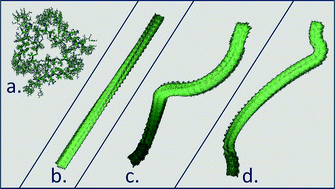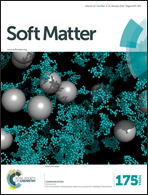The twisted tauopathies: surface interactions of helically patterned filaments seen in alzheimer's disease and elsewhere
Abstract
This paper broadly examines the dynamics of helically patterned filaments interacting with a surface and focuses on the surface interaction of amyloid fibrils formed by tau protein. Two structures are addressed in detail: cylindrical filaments with periodic thinning (CF-PT) and paired helical filaments (PHFs). PHFs are observed in neural tissue affected by Alzheimer's disease and may aggregate to form the pathological neurofibrillary tangles associated with the illness. Work using electron microscopy has demonstrated the conversion of CF-PT into PHFs in vitro, suggesting CF-PT to be a PHF precursor in vivo. Here we model CF-PT as a patterned elastic rod placed on a flat surface (characteristic of the environment during microscopy) and examine the conformational changes resulting in stable surface bonding. Analysis of this conformational space reveals structures resembling PHFs and thus provides a mechanistic explanation of the CF-PT to PHF transition. We develop a general phase diagram of the filament conformation as a function of filament twist and bend rigidity. Results of this work also suggest that we can obtain desired filament conformations by patterning interactions of elastic filaments with a substrate, and therefore can be used as a method in microfabrication.


 Please wait while we load your content...
Please wait while we load your content...